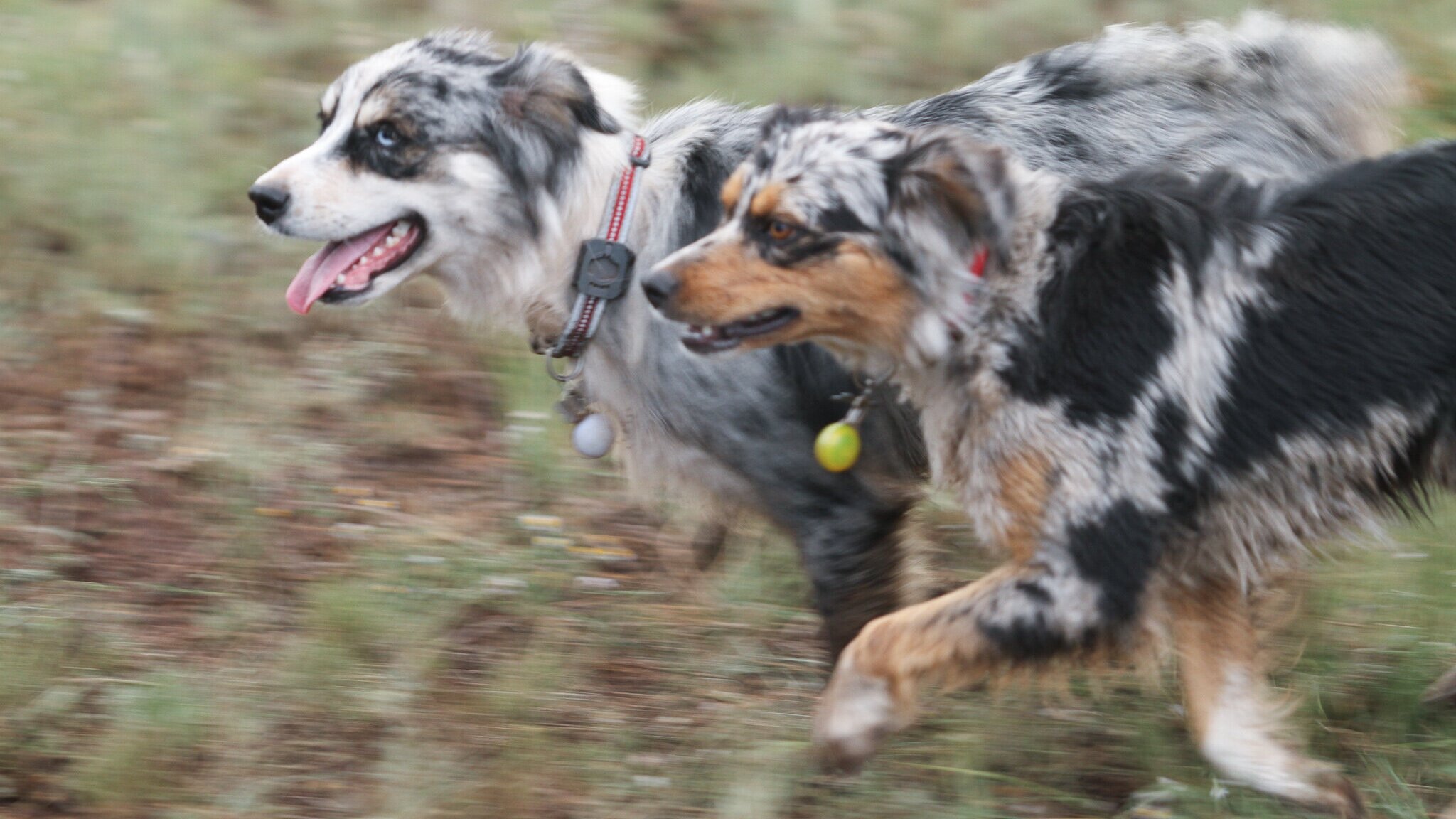Miniature Australian Shepherds
The history is a little vague, but it is believed that Australian Shepherds originated in Spain and were imported to California by way of Australia. The breed standard we have today developed in North America during the late 19th and early 20th centuries as the dogs were bred for function on working farms. They also became associated with cowboys and rodeos. Australian Shepherds were valued for their intelligence and innate herding capabilities. The Australian Shepherd Club was formed in 1957, bringing formal recognition to the breed. The current standard was not established until 1977.
Australian Shepherds are easy to train. They not only excel at herding, but at dog agility. To top it off, they are great companions: very loyal and wonderful with children. They are protective and devoted and not characteristically aggressive. Like people, each dog has a different personality, but they tend to be energetic when it’s time to be and calm when it’s time to be. They are good at reading the situation and their people.
The Miniature Australian Shepherd came into being as breeders selected smaller dogs ranging from 14-18 inches. Maintaining the same talents as larger Aussies, minis are easier to have in homes and to travel with. They are less intimidating size for humans while still being able to perform on working ranches and farms. These amazing dogs are perfect for families, people needing a companion, or as working dogs.
The American Stock Dog Registry (ASDR) recognizes Standard, Miniature, and Toy Australian Shepherds. The American Kennel Club (AKC) designates Mini Aussies as a new breed: “Miniature American Shepherds”. We choose to keep with the heritage of Australian Shepherds are register our dogs with ASDR rather than AKC.
Types of Mini Aussies are determined by their coat colors. The most recognized colors are Blue Merle, Red Merle, Black Tri, and Red Tri. Excessive white is considered undesirable and is often associated with vision or hearing problems. White markings should be limited to the muzzle, cheeks, crown, collar, belly, chest, and legs to the hock.

